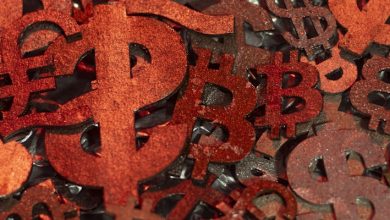How to Analyze the Tokenomics of DeFi Projects

- Understanding the basics of tokenomics in DeFi
- Key factors to consider when analyzing DeFi tokenomics
- The role of token supply and distribution in DeFi projects
- Evaluating the utility and value proposition of DeFi tokens
- Comparing tokenomics models across different DeFi projects
- Tips for conducting thorough research on DeFi tokenomics
Understanding the basics of tokenomics in DeFi
Tokenomics in DeFi projects refers to the study of how tokens operate within a decentralized finance ecosystem. It involves analyzing various aspects such as token distribution, supply, demand, utility, and governance. Understanding the basics of tokenomics is crucial for investors and users to make informed decisions when participating in DeFi projects.
One key aspect of tokenomics is token distribution. This involves examining how tokens are distributed among different stakeholders, including developers, investors, users, and the community. A well-balanced token distribution can help ensure a healthy ecosystem where all participants have a stake in the project’s success.
Another important factor to consider is token supply. Token supply refers to the total number of tokens in circulation and how new tokens are minted or burned. By analyzing token supply dynamics, investors can assess the potential impact on token value and inflation rates, which are crucial for long-term sustainability.
Token demand is also a critical component of tokenomics. Token demand is driven by factors such as utility, scarcity, and market sentiment. Understanding the factors that drive token demand can help investors anticipate price movements and identify investment opportunities in DeFi projects.
Additionally, token utility plays a significant role in tokenomics. Token utility refers to the functions and use cases of a token within the ecosystem. Tokens with clear utility and strong use cases are more likely to retain value and attract users, driving demand and adoption in the long run.
Lastly, governance mechanisms are essential for the sustainable growth of DeFi projects. Governance tokens allow holders to participate in decision-making processes such as voting on protocol upgrades, funding proposals, and changes to tokenomics. By analyzing governance mechanisms, investors can assess the project’s decentralization, transparency, and community engagement.
Key factors to consider when analyzing DeFi tokenomics
When analyzing the tokenomics of DeFi projects, there are several key factors that should be taken into consideration. These factors play a critical role in determining the potential success and sustainability of a DeFi token. Below are some key factors to consider:
- Supply and distribution: Examining the total supply of tokens and how they are distributed among stakeholders can provide insights into the project’s long-term viability.
- Token utility: Understanding the purpose and utility of the token within the DeFi ecosystem is essential for evaluating its potential value and demand.
- Incentive mechanisms: Analyzing the incentives provided by the project to token holders and participants can help assess the token’s attractiveness and potential for growth.
- Governance structure: Evaluating the governance model of the project and the decision-making process can shed light on the token holders’ ability to influence the project’s direction.
- Economic models: Studying the economic models underlying the tokenomics can help assess the sustainability and scalability of the project.
By carefully considering these key factors, investors and analysts can gain a deeper understanding of a DeFi project’s tokenomics and make more informed decisions about its potential for success in the rapidly evolving DeFi landscape.
The role of token supply and distribution in DeFi projects
Token supply and distribution play a crucial role in the success and sustainability of DeFi projects. The way tokens are distributed among users can significantly impact the project’s value and adoption. A well-thought-out token distribution strategy can attract investors and incentivize participation in the ecosystem.
When analyzing the tokenomics of a DeFi project, it is essential to consider how the token supply is managed. An excessive token supply can lead to inflation and devalue the tokens, while a limited supply can create scarcity and drive up the token’s value. It is important to strike a balance between these two extremes to maintain a healthy token economy.
Furthermore, the distribution of tokens among various stakeholders, such as developers, investors, and users, can influence the project’s governance and decision-making processes. Projects that allocate tokens fairly and transparently are more likely to gain trust and support from the community.
Overall, the token supply and distribution model of a DeFi project should be carefully evaluated to ensure long-term success and sustainability. By analyzing these factors, investors can make informed decisions and identify projects with strong tokenomics fundamentals.
Evaluating the utility and value proposition of DeFi tokens
When evaluating the utility and value proposition of DeFi tokens, it is essential to consider various factors that can impact their long-term success. DeFi tokens are a crucial component of decentralized finance projects, as they often serve as the primary means of accessing and participating in these platforms. Here are some key aspects to consider when analyzing the tokenomics of DeFi projects:
- Token Use Cases: Evaluate the different use cases of the token within the DeFi ecosystem. Determine whether the token is essential for accessing specific services, participating in governance decisions, or providing liquidity to the platform.
- Tokenomics Structure: Examine the tokenomics structure, including the total supply, distribution mechanisms, inflation rate, and token burning mechanisms. Understanding these factors can give you insights into the token’s scarcity and potential for value appreciation.
- Community Involvement: Assess the level of community involvement and engagement with the project. Active communities can contribute to the growth and adoption of the token, ultimately increasing its utility and value.
- Security and Audits: Look into the security measures implemented by the project, such as code audits, bug bounties, and smart contract security. A secure project is more likely to attract users and investors, enhancing the token’s value proposition.
- Partnerships and Integrations: Consider any strategic partnerships or integrations that the project has established. Collaborations with other DeFi projects or mainstream companies can increase the token’s utility and visibility in the market.
By carefully evaluating these aspects of DeFi tokens, you can gain a better understanding of their utility and value proposition in the broader decentralized finance landscape. This analysis can help you make informed investment decisions and identify projects with strong fundamentals and long-term viability.
Comparing tokenomics models across different DeFi projects
When comparing tokenomics models across various DeFi projects, it is crucial to consider several key factors. One of the first things to analyze is the distribution of tokens within the ecosystem. This includes looking at how tokens are allocated during the initial token sale, as well as how they are distributed over time through mining, staking, or other mechanisms.
Another important aspect to consider is the token supply and inflation rate. Understanding how many tokens will be minted over time, and at what rate, can give insight into the potential long-term value of the token. Additionally, analyzing how tokens are burned or removed from circulation can also impact the overall tokenomics model.
Furthermore, it is essential to evaluate the utility of the token within the DeFi project. This includes looking at the various use cases for the token, such as governance voting, fee discounts, or liquidity mining rewards. The more utility a token has, the more likely it is to retain value and attract users to the ecosystem.
Lastly, it is important to analyze the overall economic design of the tokenomics model. This includes considering factors such as token velocity, network effects, and potential barriers to entry. By taking a holistic approach to comparing tokenomics models across different DeFi projects, investors can make more informed decisions about where to allocate their capital.
Tips for conducting thorough research on DeFi tokenomics
If you are looking to conduct thorough research on DeFi tokenomics, there are several tips that can help you analyze these projects effectively. Understanding the tokenomics of a DeFi project is crucial in determining its potential for success and profitability. Here are some key tips to keep in mind:
- Start by researching the team behind the project. Look into their backgrounds, experience, and track record in the crypto space. A strong team with relevant expertise is more likely to create a successful project.
- Examine the token distribution model. Take a close look at how tokens are allocated, vested, and distributed. A fair and transparent distribution model is essential for building trust with investors.
- Analyze the token utility. Understand the purpose of the token within the ecosystem and how it is used. Tokens with clear utility and strong use cases are more likely to hold long-term value.
- Check the project’s roadmap and milestones. Look for a clear plan of development and achievable goals. Projects that have a solid roadmap are more likely to deliver on their promises.
- Assess the project’s community and reputation. Look for active community engagement, positive sentiment, and a strong reputation within the crypto community. A supportive community can help drive adoption and growth.
By following these tips and conducting thorough research on DeFi tokenomics, you can make more informed investment decisions and identify projects with strong potential for growth and success in the decentralized finance space.



